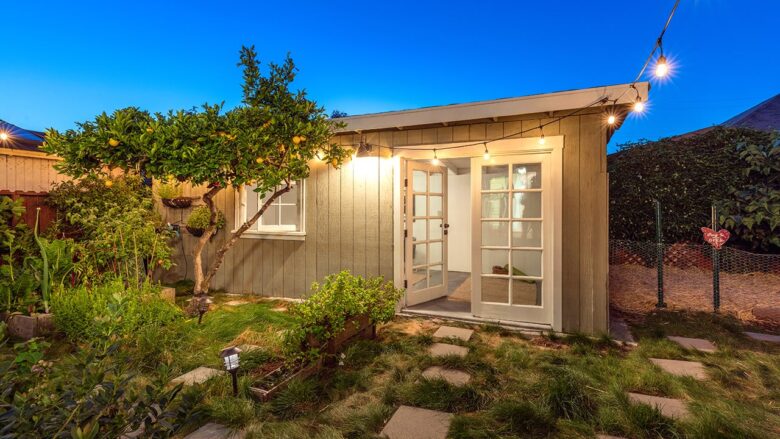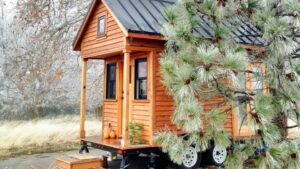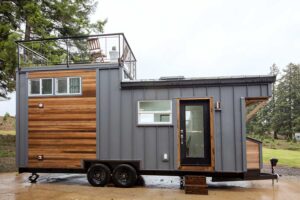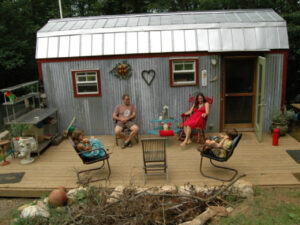The Tiny Home movement has proliferated in recent years. It offers an alternative lifestyle that values sustainability and simplicity. But if you want to own a small home, you need to think carefully about the financial aspects, such as obtaining financing and insurance. This guide describes the ins and outs of tiny home financing and insurance and provides useful information for those looking to join the growing community of tiny homeowners.
1. Tiny Home Financing: Understanding the Options
Personal Savings and Budgeting:
Many people choose to use their savings to pay for their tiny home. This approach takes away the complexities of loans and interest rates. Before you start building a tiny house, look at your budget and make sure it makes sense. This method of self-financing protects your finances and prevents you from entering into long-term debt.
Personal Loans:
Personal loans are an option for people who do not have enough savings. Personal loans are available from banks, credit unions, and online lenders, with varying interest rates and repayment terms. Lenders may want to see detailed plans for your small home project before granting you a loan, so be prepared to present one.
RV Loans:
Some tiny homes on wheels can be used as recreational vehicles (RVs), meaning an RV loan is a great way to make money. Because tiny houses can be used as both a home and a driving vehicle, the interest rates on these loans are typically lower than those on personal loans. Ask your lender what the requirements are and make sure that your tiny house meets them.
A Line of Credit or Home Equity Loan:
Homeowners who already own a home may want to consider a mortgage loan or line of credit. One way people can finance a small home project is by using the equity in their primary home. This option carries the risk of using your main home as collateral, so it’s important to think carefully and plan your finances.
Crowdfunding and Donations:
In recent years, crowdfunding sites have made it easier to pay for many projects, such as tiny houses. You can create a fun campaign for your tiny house project and ask friends, family, and people who share your interests to support you. Also, look for grants from groups that support projects that promote sustainable living or affordable housing.
2. Tiny House Insurance: Keeping Your Money Safe
Special Insurance for Small Homes:
Because tiny homes vary so much, regular homeowners insurance may not adequately cover them. Look for a policy that is written specifically for a small home and that covers the needs and risks that come with it. Typically, these policies cover liability, theft, and damage, so your investment is fully protected.
Camper Coverage:
If you can move your tiny house and it counts as an RV, you may need to get RV insurance. This coverage applies to cars that are used both as a home and as a means of transportation. The majority of RV insurance policies cover damage resulting from mishaps, collisions, and other risks that may arise.
Builder’s Risk Insurance:
You may want to consider builder’s risk insurance to protect your tiny house from damage during the construction process. This type of insurance covers losses due to theft, vandalism, or natural disasters while the building is still under construction.
Liability Insurance:
As a small homeowner, you need liability insurance to protect yourself from potential lawsuits. Accidents happen, and if someone is injured on your property, liability insurance can help pay for medical bills or legal fees.
Personal Belongings Insurance
Check how much your small home insurance policy covers for your personal belongings. For expensive items such as electronics, appliances, or custom furniture, you may want to purchase additional insurance. This way, your belongings are well protected against theft or damage.
Conclusion
Living in a tiny house is not only an option; it is also an investment that should be carefully considered. They to be fully informed and make decisions that suit them, whether they are looking for financing options or choosing the right insurance coverage. Knowing how to get financing and insurance for a tiny home can help you move into a tiny home with confidence and peace of mind.
FAQs
1. Can I use the money I save to pay for my tiny house?
Yes, using your savings is a common and responsible way to pay for a tiny house project. Check your finances before you start and make a reasonable budget.
2. What should I do if my deposit is not enough?
If you don’t have enough money to save, you can apply for a personal loan from a bank, credit union, or online lender. Make sure you have a detailed project plan, as the lender may need this to approve your loan.
3. Is an RV loan a good way to pay for a tiny house?
Yes, you can get a lower-interest loan if your tiny house on wheels is a camper. Check with your lender to make sure you meet the tiny house requirements.
4. Can I use the equity in my current home to pay for my tiny house?
Homeowners can use a mortgage loan or line of credit to pay for the tiny house construction project. But be careful because your primary home can be used as collateral.
5. Is crowdfunding a good way to build a tiny house?
Through crowdfunding sites, people can even start campaigns to raise money for their tiny house projects. Also, look for grants to support groups that promote sustainable living or affordable housing projects.
6. Will regular home insurance cover these small houses?
Regular homeowner’s insurance may not fully cover small homes. Consider purchasing small home insurance designed to cover the specific risks associated with these small homes.



